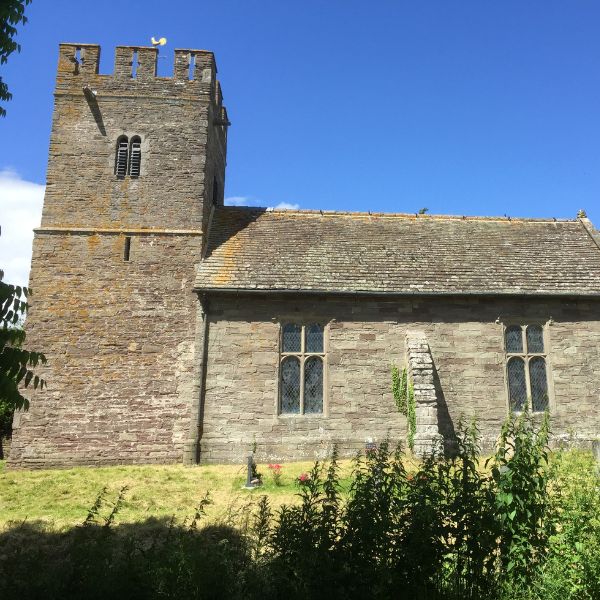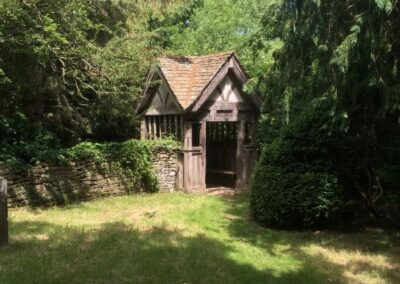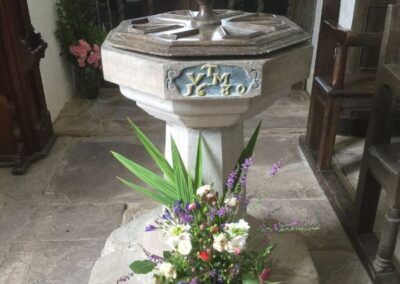An ancient church unchanged since the 17th century. Access is down a brookside path through the woods, and the church is an oasis of peace, distant from the modern world, with a simple, light filled interior. It’s always open and you are very welcome.
There are records of the church since pre-conquest times; before 1066 the manor was owned by Harold Godwinson, who famously lost at the Battle of Hastings.
In 1415 the “last Prince of Wales”, Owain Glyndwr, disappeared, after a decade and more of fighting the English to assert and defend his title. There is a longstanding belief that he was buried to the west of the porch here, but it is unlikely we will ever know the truth.
By the early 17th century, the manor was in the possession of the Tomkins family. James Tomkins became MP for Leominster in 1623 and the planting of the famous yews and Scots pines of Monnington Walk dates from about 1628. The Tomkins were very much Royalists, however; there is a fine Charles II coat of arms on the south wall.
It is to James’ grandson Uvedale that we owe the current appearance of the church. The nave was rebuilt in 1679 and you will find many references in the building to this time and to Uvedale’s marriage to Mary Caple of How Caple. It is a unique example of an unchanged seventeenth century church interior.
Readers of Revd Francis Kilvert’s much loved diary may recall that his sister Thersie was married to the rector of Monnington, and he was a frequent visitor.
“Sunday, 13 April 1876
One of the quiet peaceful Monnington Sundays. I like a Sunday at Monnington, it is so calm
and so serene. There is no hurry, no crowd, no confusion, no noise.”
Little has changed.
Location
Monnington on Wye
Herefordshire
HR4 7NL
- Car Parking: layby at the road end of the footpath leading to church
- Disabled Access: no steps to the nave; single step to the chancel; uneven grassy track through woods to the church
- Hours of Access : always open




